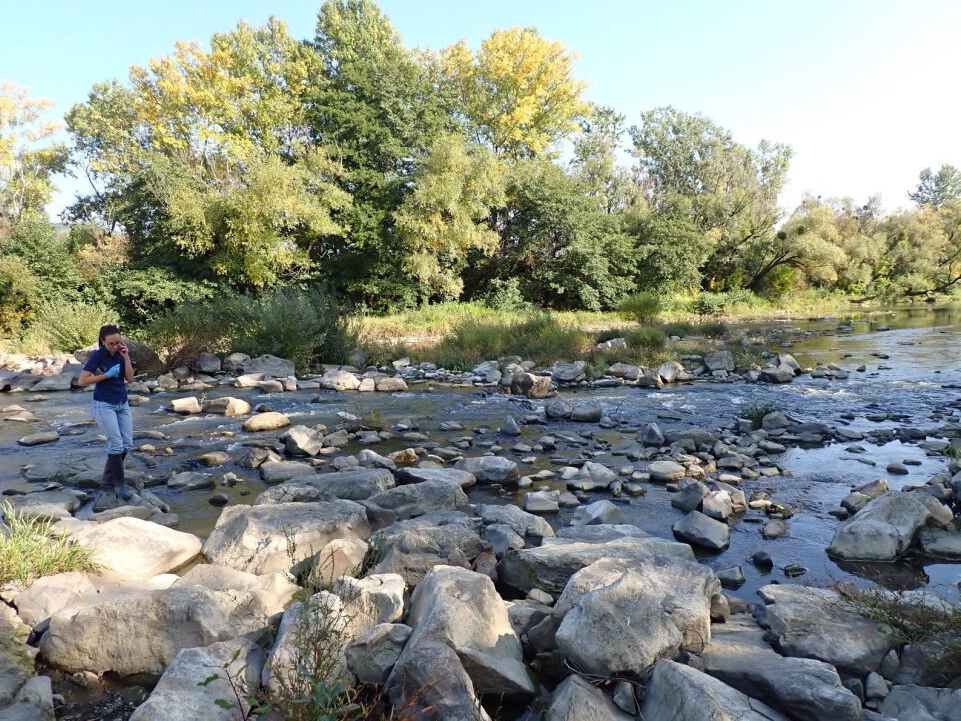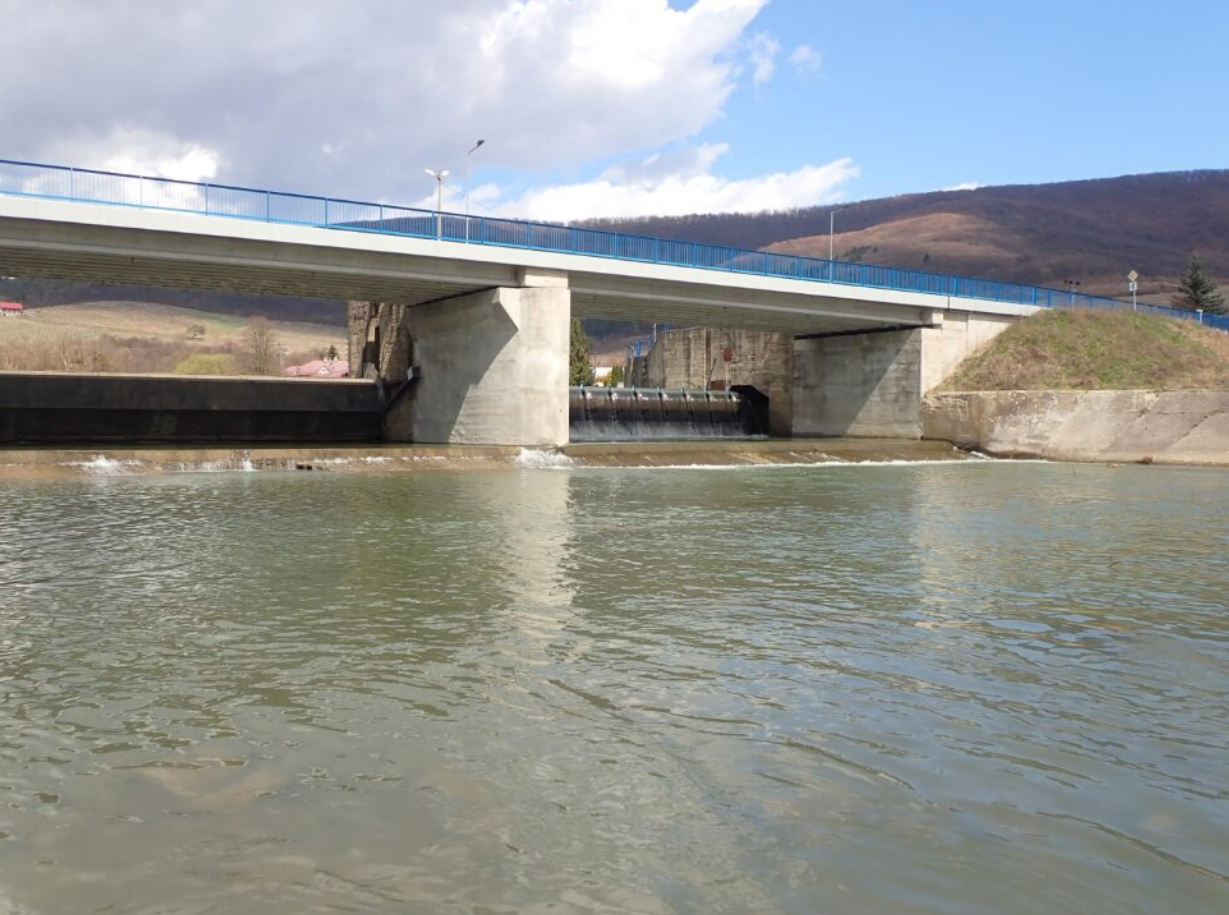Krivoshtyansky bridge
The environmental condition of the Laborec River stretch between Strážske and Krivošťany is quite diverse. The river flows through a partially modified channel with a road bridge and a weir that regulates the water level for a small hydroelectric power plant. This creates a water deficit on a short stretch of the river, leading to exposed riverbed. The riverbanks are reinforced with rubble stones.


The character of the river above and below the weir differs significantly, with a deeper, calm section with a bottom covered in fine sediment compared to a shallower, faster, well-oxygenated, rocky (riffle) lower section. In temporary pools near the river, along the banks, and directly in calmer sections above the weir, the students observed frog egg masses. The presence of a common toad carcass on the road a few meters from the Laborec suggests that this area still supports these very sensitive organisms, amphibians, often referred to as bioindicators of ecosystem health.
A significant shortcoming of water management interventions at this location is the creation of a migration barrier. The absence of an alternative corridor for fish and aquatic invertebrates is a very negative phenomenon, affecting not only current impacts, especially on fish, but also creating long-term consequences in terms of decreasing population numbers, species diversity, genetic variability, and changes in the bionomics of aquatic organisms. The migration barrier also serves as a site where excessive fishing of fish and aquatic invertebrates occurs, both by anglers and predatory fish, and especially fish-eating birds. Fish have nowhere to escape, disrupting the trophic relationships in the ecosystem. Stocking fish to replenish fish communities only partially solves this problem and can lead to the introduction of non-native species (the occurrence of the Asian clam, evident here, is noteworthy and entered our waters at the beginning of the new millennium). The area around the bridge and the waterworks is easily accessible for local communities, but the immediate surroundings of the river are less so. Recreational and educational use of this river section was not considered in the channel modifications. For example, school excursions are not straightforward here and carry the risk of accidents. However, there are interesting phenomena, such as the formation of the river channel through erosion and sedimentation, water percolation through sediments with a beautiful demonstration of the so-called self-cleaning capabilities of the river landscape complex, and a relatively diverse biota (e.g., periphyton – living coatings on submerged stones and associated fauna, forming a community of so-called scraper organisms, from mollusks to northern riffleshell). It is a good place for observing birdlife, as well as fish attempting to overcome the migration barrier (fish gather here in large numbers, especially rheophilic larger species such as European chub, European bullhead, northern bleak, and especially European bitterling). This section is repeatedly the site of observed mass fish mortality due to poisoning (making it a sad unique case in the Slovakian context in this stretch of the Laborec River). One-time disruptions to aquatic communities are followed by their recovery, but it is essential to realize that only a few species, typically ecological opportunists, are capable of rapid recovery. The original diversity of communities gradually diminishes, and non-native, adaptable species are given the opportunity to thrive. The natural conditions of the immediate surroundings are significant; the Laborec River above the bridge flows through valuable territory where its natural channel intersects with the limestone ridge, and the river surrounds valuable alluvial deposits. It will be very commendable when the communities of surrounding towns and villages fully realize that their origin and prosperity are closely connected to the landscape shaped by the river and the river itself. The restoration of the natural functioning of the river and its landscape is a significant challenge that can bring substantial benefits in the form of a healthful and aesthetically valuable environment, diverse biota, and other advantages, such as the regeneration of soil and renewable resources (water, sediment, wood, etc.). It represents a set of tasks for river managers, agroecosystems, forests, as well as local authorities, schools, and the public. The region, which has been evolving in the "shadow" of systemic ecological burdens (due to improper handling of liquid, solid, and gaseous waste from chemical operations, etc.) and is known as the "triangle of death," objectively belonging to the most polluted areas in the country, deserves a significant, positive turnaround.






